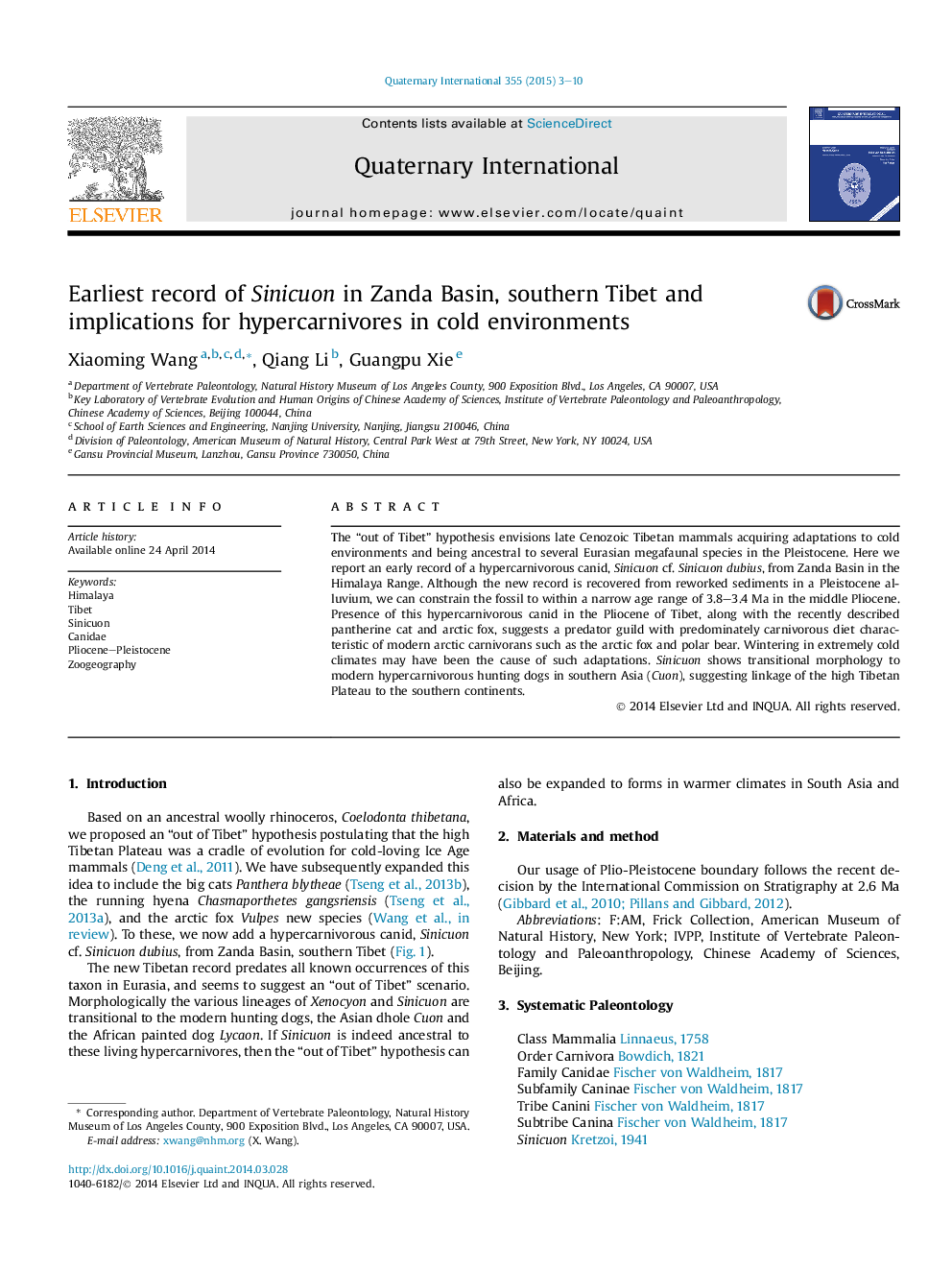| کد مقاله | کد نشریه | سال انتشار | مقاله انگلیسی | نسخه تمام متن |
|---|---|---|---|---|
| 1041051 | 1484141 | 2015 | 8 صفحه PDF | دانلود رایگان |
The “out of Tibet” hypothesis envisions late Cenozoic Tibetan mammals acquiring adaptations to cold environments and being ancestral to several Eurasian megafaunal species in the Pleistocene. Here we report an early record of a hypercarnivorous canid, Sinicuon cf. Sinicuon dubius, from Zanda Basin in the Himalaya Range. Although the new record is recovered from reworked sediments in a Pleistocene alluvium, we can constrain the fossil to within a narrow age range of 3.8–3.4 Ma in the middle Pliocene. Presence of this hypercarnivorous canid in the Pliocene of Tibet, along with the recently described pantherine cat and arctic fox, suggests a predator guild with predominately carnivorous diet characteristic of modern arctic carnivorans such as the arctic fox and polar bear. Wintering in extremely cold climates may have been the cause of such adaptations. Sinicuon shows transitional morphology to modern hypercarnivorous hunting dogs in southern Asia (Cuon), suggesting linkage of the high Tibetan Plateau to the southern continents.
Journal: Quaternary International - Volume 355, 12 January 2015, Pages 3–10
